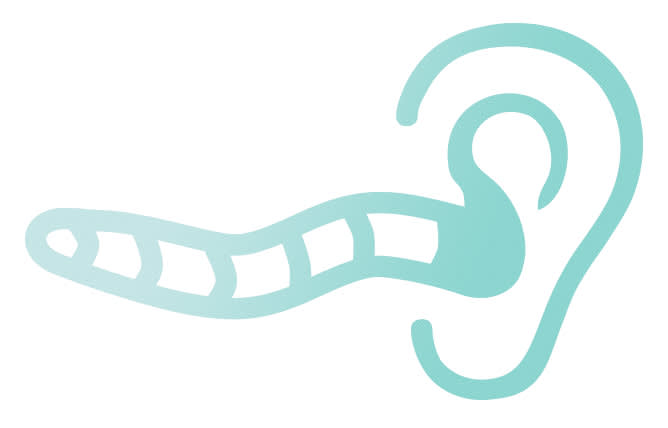Whatever you do, don’t think of the hook to “Hotline Bling.”
You probably know the words so well just reading a few will fill out the entire chorus in your head: “You used to ________ me on my _______ _________.”
If that chorus is now lodged in your brain, playing in an involuntary 8-10 second loop, then you’ve got an earworm. (If it’s not stuck in your head, then maybe you just need to think of a different song like, say, “Call Me Maybe” or “Like a Virgin.” We can wait.)

Researchers are, unhelpfully, not clear on what exactly causes earworms or even where they live in the brain. Most studies to date have been simple surveys — only recently have scientists attempted to trigger earworms in the lab. “We don’t have a good mechanistic explanation,” says Elizabeth Hellmuth Margulis, author of On Repeat: How Music Plays the Mind. “People are good at audio imagery, but earworms have an involuntary component.”
When people chewed gum immediately after hearing a catchy tune, they were 30 percent less likely to suffer from the earworm.
Though some studies have suggested certain traits leave some people more susceptible to earworms — neuroticism, musicianship — there are just as many studies that contradict those findings. Margulis’ own students have found that singing or dancing along to a song may make the listener more susceptible to catching an earworm, suggesting earworms could have something to do with how music affects the brain’s motor cortex. Songs with greater earworm power tend to be fairly simple and repetitive, rhythmically steady and alternating between higher and lower pitch. Taylor Swift is a master craftswoman of the earworm. (Quick: Try not to think of “Shake It Off.”)
The word itself comes from the German portmanteau Ohwhurm, which technically means something else grosser (a literal worm that lives in the ear, or earwig). Earworms have been referenced in works by everyone from Mark Twain — meaning the phenomenon predates Top 40 radio — to Jerry Seinfeld. “The brain gets trapped in an ironic process of remembering not to think about the thing that one is trying not to think about,” says Kellaris, who is also known as “Dr. Earworm.” “Psychologists call it the ‘white bear phenomenon.’” (Quick: Don’t think of a white bear.)
Fortunately, though, earworms, while mildly annoying at times, aren’t all that unpleasant. Kellaris himself is “haunted by Byzantine chant.” And who among us is not? (Quick: Try not to get the Easter Vespers hymn “Phos Hilaron” stuck in your head. Impossible!)

The next time you get something stuck on repeat in your gray matter, new research suggests there is a way out: When people chewed gum immediately after hearing a catchy tune, they were 30 percent less likely to suffer from the earworm. Which might make sense if earworms are indeed a function of the brain’s motor cortex. (Ironically, the Juicy Fruit theme song is something of an amazing earworm itself: “Juicy Fruit is gonna move you!”)
“The cognitive and brain activity needed to organize sustained chewing interferes with the cognitive and brain processes that are otherwise used for short-term memory and for imagining speech and other sounds,” says the study’s author, C. Philip Beaman, professor of cognitive science at the Centre for Cognition Research at the UK’s University of Reading.
Don’t have any gum handy? Do anything you can to engage your brain in something else. Developer and designer Tony Gines has a somewhat more sinister solution: He created Unhearit, a website that replaces the catchy tune in your head for another catchy tune. “Using the latest in reverse-auditory-melodic-unstickification technology, we’ve been able to allow our users to ‘unhear’ songs by hearing equally catchy songs,” reads the copy on the site.
So we clicked, and had “Hotline Bling” instantly replaced with Harold Faltermeyer’s “Axel F.” And we saw that it was good.
Oh, by the way, don’t think of “Axel F.”




